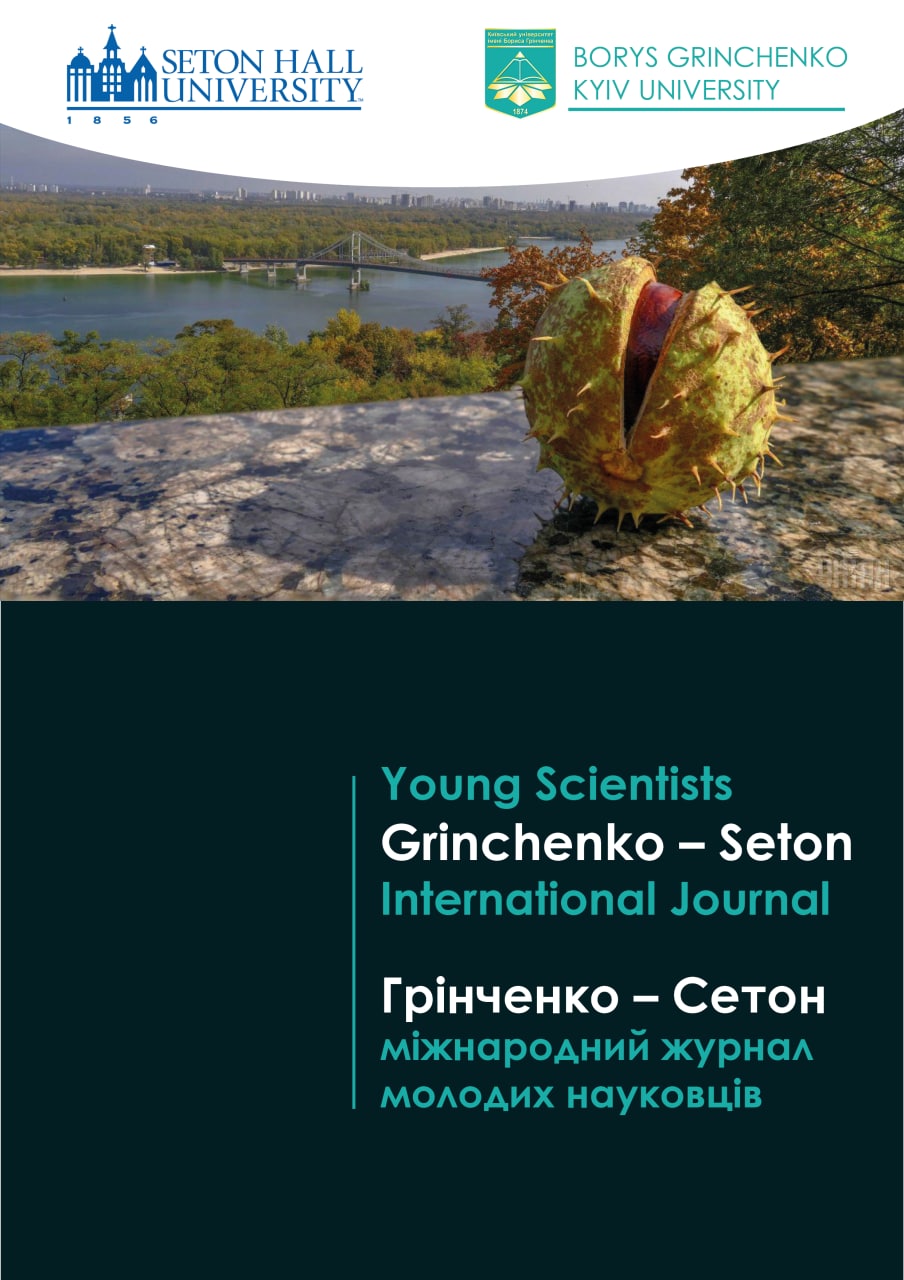Анна Іщук. Виникнення перших жіночих рухів та організацій у США
Ключові слова:
фемінізм, жіночий рух, феміністичні хвилі, жіночі організації, поправка про рівні права, гендерна дискримінація, гендерна рівність, США, середина 19-20 ст.Анотація
Стаття містить комплексний аналіз становлення одного з центральних елементів громадянського суспільства США – жіночого руху та організацій. Автор проаналізувала основні періоди розвитку жіночого руху, які американські дослідники називають хвилями. В огляді історії жіночого руху визначено та охарактеризовано чотири хвилі жіночого руху в США за цілями, масштабами діяльності, методами та результатами боротьби за гендерну рівність в американському суспільстві. Виникнення жіночого руху зумовлено багатьма причинами, в тому числі розвитком самого суспільства, на різних історичних етапах жіночий рух набував різних форм. Еволюція жіночих рухів у Сполучених Штатах свідчить про глибокі зміни, що відбулися в поведінці та свідомості жінок протягом століть, ми можемо простежити досить складний процес перетворення жінки з політичних і соціальних об’єктів на дуже впливових суб’єктів. Предметом дослідження є основні етапи розвитку жіночого руху та організацій у США. Методологічною основою дослідження були загальнонаукові методи дослідження – системний та структурно-функціональний аналіз. Важливим елементом став історико-хронологічний метод, який дає змогу вивчити виникнення, становлення та розвиток жіночого руху в США, а також описати основні події в хронологічній послідовності. Розглядаючи зародження жіночого руху в США, через характеристику основних етапів і особливості його розвитку, ми розуміємо, що всі зміни в статусі американської жінки, незважаючи на їх об'єктивну неминучість, відбулися і продовжують реалізовуватися. в результаті конкретної тривалої і наполегливої праці жіночого руху.
Посилання
Alexander, K. L. (2020, June 18). Feminism: The Second Wave. National Women’s History Museum. https://www.womenshistory.org/exhibits/feminism-second-wave.
Blum, L. M. (1991). Between Feminism and Labor: The Significance of the Comparable Worth Movement. Berkeley: University of California Press. 21-26.
DOI: http://ark.cdlib.org/ark:/13030/ft3b69n89t/.
Cochrane, K. (2013, December 10). The Fourth Wave of Feminism: Meet the Rebel Women. The Guardian. https://www.theguardian.com/world/2013/dec/10/fourth-wave-feminism-rebel-women.
Darms, L. (2013). The Riot Grrrl Collection. New York. The Feminist Press. 7-10.
Dicker, R. & Piepmeier, A. (2003). Catching a Wave: Reclaiming Feminism for the 21st Century. Boston: Northeastern University Press. 10.
Dumenil, L. (2013). Women’s rights. The Oxford Encyclopedia of American Social History. Oxford University Press. 2013. 55-57.
Flexner, E., & Fitzpatrick, E. (1996). Century of Struggle: The Woman's Rights Movement in the United States. Belknap Press of Harvard University Press. 103-105.
Fox, M. (2006, Feb. 5). Betty Friedan, Who Ignited Cause in 'Feminine Mystique, Dies at 85. The New York Times. https://www.nytimes.com/2006/02/05/us/betty-friedan-who-ignited-cause-in-feminine-mystique-dies-at-85.html.
Freeman, J. (1973). The Origins of the Women's Liberation Movement. The American Journal of Sociology. Vol. 78. No. 4. Changing Women in a Changing. Society. 792-811.
Getchell, M. (2016). The student movement and the antiwar movement. Khan Academy. https://www.khanacademy.org/humanities/us-history/postwarera/1960s-america/a/the-student-movement-and-the-antiwar-movement.
Kennnedy, John F. Presidential Library and Museum. (n.d.). United States President's Commission on the Status of Women Records. https://www.jfklibrary.org/asset-viewer/archives/USPCSW.
Justia. US Supreme Court. (1973). Roe v. Wade, 410 U.S. 113.
https://supreme.justia.com/cases/federal/us/410/113/.
Kliff, S. (2012, May 10). Exclusive: NARAL President Nancy Keenan to step down. Washington Post. https://www.washingtonpost.com/blogs/ezra-klein/post/exclusive-naral-president-nancy-keenan-to-step-down/2012/05/10/gIQAn85PGU_blog.html.
Krahulik, K. C. (2009). Sisterhood Revisited during the Second Wave of Feminism. Reviews in American History. Vol. 37. no. 1. 140-147. https://www.jstor.org/stable/40210992.
Lange, A. (2015). Female Reformers in the Progressive Era. National Women’s History Museum. http://www.crusadeforthevote.org/progressive-era-reformers.
Lange, A. (2015). Suffragists Organize: American Woman Suffrage Association. National Women’s History Museum. http://www.crusadeforthevote.org/awsa-organize.
Lange, A. (2015). Suffragists Unite: National American Woman Suffrage Association. National Women’s History Museum. http://www.crusadeforthevote.org/nawsa-united.
League of Women Voters. (n.d.). History. https://www.lwv.org/about-us/history.
Lear, M. W. (1968, March 10). The Second Feminist Wave: What do these women want? The New York Times.
https://www.nytimes.com/1968/03/10/archives/the-second-feminist-wave.html?legacy=true.
Lewis, J. (2018, September 21). Profile of the National Organization for Women (NOW). ThoughtCo. https://www.thoughtco.com/profile-of-the-national-organization-for-women-3528999.
Lewis ,J. (2021, September 3). Feminist Organizations of the 1970s. ThoughtCo.
https://www.thoughtco.com/top-feminist-organizations-of-the-1970s-3528928.
Maillé, C. (2015). Feminist Interventions in Political Representation in the United States and Canada: Training Programs and Legal Quotas. Special Issue: Women in the USA. European journal of American studies. P. 9.
McMillen, S. G. (2008). Seneca Falls and the origins of the women's rights movement. New York: Oxford University Press. 322 p.
Miller, M. (2003). Women's Action Alliance Records. Smith College Special Collections. https://findingaids.smith.edu/repositories/2/resources/1017.
Million, J. (2003). Woman's voice, woman's place : Lucy Stone and the birth of the woman's rights movement. Westport, Conn.: Praeger.
Mott, L. (1848). The Declaration of Sentiments, Seneca Falls Conference, 1848. Modern History Sourcebook: Fordham University. Wayback Machine. November 1998.
https://web.archive.org/web/20180615111619/https://sourcebooks.fordham.edu/mod/senecafalls.asp.
Napikoski, L. (2021, February 16). Redstockings Radical Feminist Group. ThoughtCo.
https://www.thoughtco.com/redstockings-womens-liberation-group-3528981.
National Archives. (n.d.). The 19th Amendment. https://www.archives.gov/exhibits/featured-documents/amendment-19.
National Archives. (n.d.). The Constitution: Amendments 11-27. https://www.archives.gov/founding-docs/amendments-11-27.
National Association of Colored Women's Clubs. (n.d.). About NACWC.
https://www.nacwc.com/history.
National Organization for Women. (n.d.). Equal Rights Amendment. Summary Of NOW Actions in Support of the ERA. 1966–2018. 1-5. https://now.org/historical-summary-of-now-era-actions/.
National Woman's Party. (n.d.). How the past informs the present. https://www.alicepaul.org/nwp/.
National Women’s Political Caucus. (n.d.). History. https://www.nwpc.org/history/.
Patterson, J. T. (1996) Grand Expectations: The United States, 1945–1974. New York: Oxford University Press. 366.
Romanyuk, A. (2009). Politychna doktryna feminizmu u KHKH st. Naukovyy visnyk Uzhhorodsʹkoho universytetu: Seriya: Politolohiya. Sotsiolohiya. Filosofiya. Uzhhorod: Vydavnytstvo UzhNU «Hoverla». Vol. 13. 339-345.
Satyavrat, N. (2015, Jun 04). Women’s Trade Union League. Britannica.
https://www.britannica.com/topic/Womens-Trade-Union-League.
Shulman ,A. K. & Moore, H. (2021, February 19). A Brief History of Women’s Liberation Movements in America. Literary Hub. https://lithub.com/a-brief-history-of-womens-liberation-movements-in-america/.
Shveda, Yu. (2002). Feminizm yak techiya politychnoyi dumky i suspilʹno-politychnyy rukh. Perpetuum Studiens, no 1, 4-6.
Simko, R. (n.d.). Women's Christian Temperance Movement. Case Western Reserve University. https://case.edu/ech/articles/w/womens-christian-temperance-movement.
Stanton, E. C. and others. (1887). National Conventions in 1866–1867. History of Woman Suffrage. Vol. II. 1861–1876. The Constitution. Rochester, Anthony. 1887–1902. 152-384.
https://archive.org/details/historyofwomansu02stanuoft/page/172/mode/2up?view=theater.
Third Wave Fund. (n.d.). Third Wave History. https://www.thirdwavefund.org/history--past-initiatives.html#.
Tuttle, L. (1986). Encyclopedia of feminism. New York, N.Y.: Facts on File Publications. 399. https://archive.org/details/encyclopediaoffe00lisa/page/n7/mode/2up.
Walker, R. (1992). Becoming the Third Wave. New York. Liberty Media for Women. 39-41.
Wellman, J. (2004). The Road to Seneca Falls: Elizabeth Cady Stanton and the Beginning of the Women’s Rights Movement Section One. Seneca Falls Convention and the Origin of the Woman’s Movement. 15-186. https://pingpdf.com/pdf-the-seneca-falls-womens-rights-convention-and-the-origin-of-the-.html.
Women's Bureau U.S. Department of Labor. (n.d.). History.
https://www.dol.gov/agencies/wb/about/history.
Zherebkina, I. (1996). Teoriya ta istoriya feminizmu. Kurs lektsiy. Kharkiv: F-Press.

